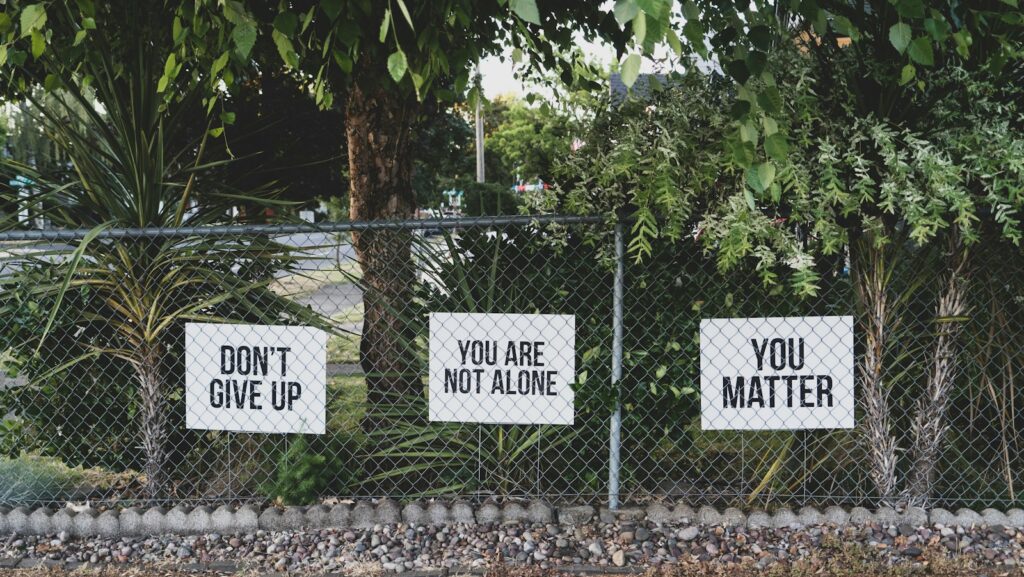September 10th, 2024, marks World Suicide Prevention Day, with this year’s theme, “Changing the Narrative on Suicide.” It’s a powerful reminder that reducing suicide rates starts with breaking the stigma and fostering a culture of openness around mental health, especially in the workplace.
Why awareness in the workplace matters
The World Health Organization estimates that in a company of 1,000 workers, one person will die by suicide every ten years. For every life lost, another 10 to 20 employees will attempt suicide. These numbers are alarming, but they highlight an urgent truth: mental health is a workplace issue, and it’s one we cannot afford to ignore.
A recent survey by Wysa, which involved over 2,000 UK employees, revealed that 1 in 4 workers have grappled with thoughts of suicide or self-harm.
Equally concerning, 15% of respondents had experienced a colleague either attempting or losing their life to suicide in the past year.
These statistics paint a stark picture—one that demands action, especially as younger employees are increasingly affected by mental health issues yet are less likely to seek professional support.
It’s also okay to ask the hard question: “Are you feeling suicidal?”
Recognising the signs
Spotting the signs of suicide is challenging but understanding the risk factors can make a critical difference.
Men, for instance, make up three-quarters of suicides in England and Wales each year. Other high-risk groups include those facing job insecurity, relationship breakdowns, or recent bereavement.
Changes in behaviour can be subtle yet telling. Colleagues who seem down, hopeless, or self-critical, become isolated, or exhibit irritability, impulsivity, or aggression, may be sending out silent cries for help.
Increased substance use or a noticeable decline in personal appearance can also be red flags.
How to start the conversation
Talking about suicide can feel daunting, but addressing it directly can be life-saving. Research shows that discussing suicidal thoughts openly doesn’t increase the risk—in fact, it can reduce it.
A calm, non-judgemental approach can provide much-needed relief to someone who is struggling. Sometimes, just acknowledging that a colleague doesn’t seem themselves can open the door to an honest conversation about their worries or difficult feelings.
It’s also okay to ask the hard question: “Are you feeling suicidal?” This helps clarify the seriousness of the situation and guide the next steps. Most people who answer ‘yes’ are not actively suicidal, but they may be in despair.
Identifying their ‘protective factors’—reasons they might hold back from acting on these thoughts, such as not wanting to hurt a loved one—can be crucial in providing support.
Actions employers can take
Clarify your duty
Workplaces have a legal and moral obligation to ensure the health, safety and wellbeing of their employees, encompassing both physical and mental health.
This means addressing potential risks such as workplace harassment, excessive workloads, lack of supervision, and discriminatory practices that could impact employees’ mental health.
Tackle the risks
Identifying and addressing the main sources of stress in your organisation demonstrates a commitment to minimising threats to employee mental health.
A comprehensive wellbeing strategy that fosters psychological safety can help reduce the likelihood of bullying, harassment, and inadequate support, all of which are risk factors linked with suicide.
Create clear guidance
Equip your team with a step-by-step guide on what to do if a colleague expresses suicidal thoughts. Include the contact details of designated senior staff members who can provide support and ensure no one feels alone in handling such a critical situation. Relevant helpline numbers, like The Samaritans, and contacts for internal or external psychological support services should be readily accessible.
It’s crucial to recognise that those who support others also need support themselves.
Facilitate access to help
Make it easier for employees to connect with healthcare and other services to address life challenges. Providing resources like a list of local organisations that offer financial, health, or relationship support, and allowing time for health appointments, are simple yet effective measures.
Flexible working options can also make a significant difference to those experiencing personal struggles.
For employees managing long-term mental or physical health issues, create a collaborative support plan, including ongoing reasonable adjustments, signs of a ‘flare-up’ or more acute episode, and support needed at these times.
Don’t forget about HR and managers
HR professionals and managers are not immune to the pressures of the workplace. A recent HR Mental Wellbeing survey found that 15% of respondents had experienced thoughts of self-harm or felt they would be better off dead within the previous two weeks. It’s crucial to recognise that those who support others also need support themselves.
A collective responsibility
Creating a supportive and mentally healthy work environment is a collective responsibility.
By changing the narrative on suicide and encouraging open dialogue about mental health, we can build workplaces where everyone feels safe to seek help—and where fewer lives are lost to suicide.






